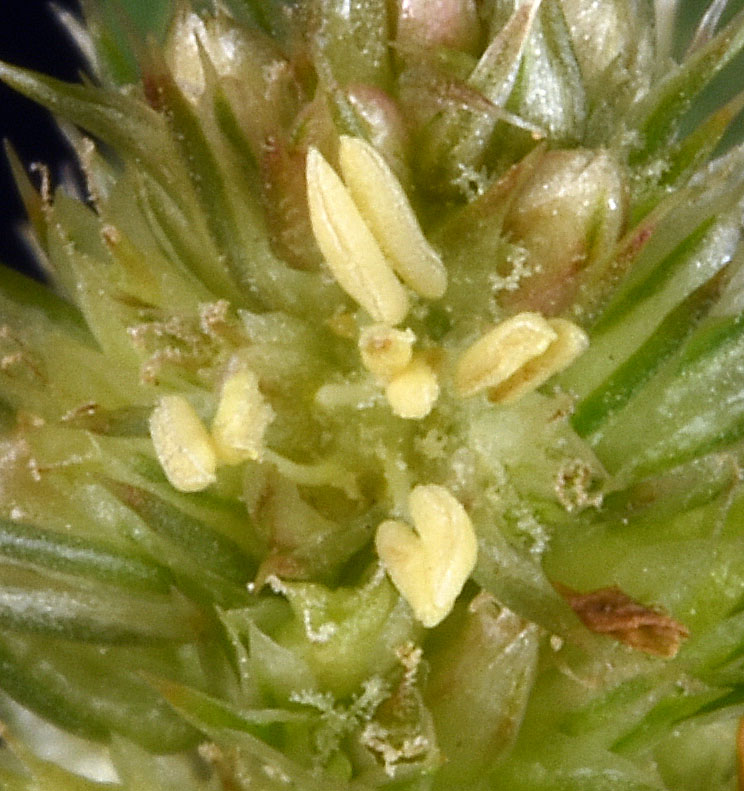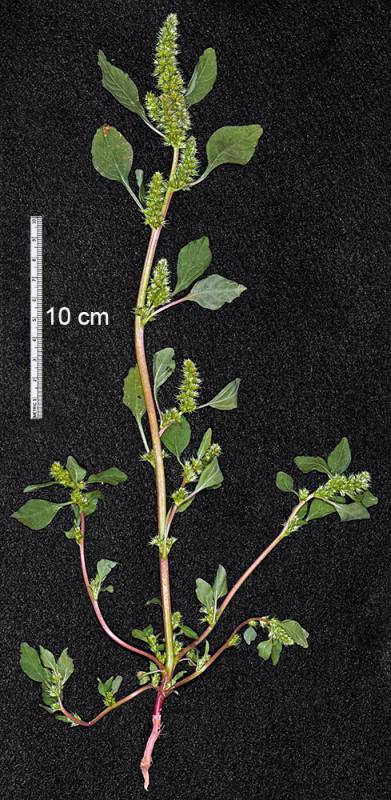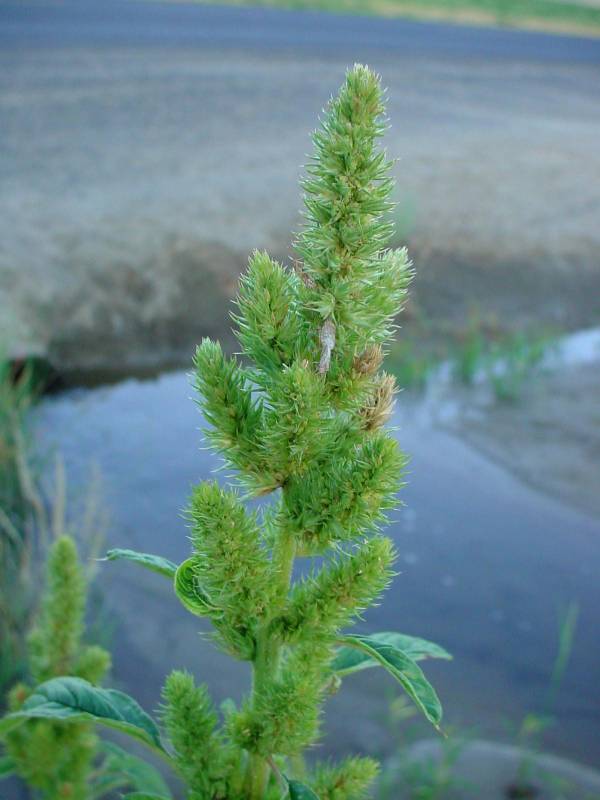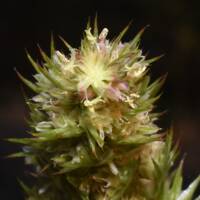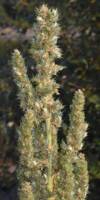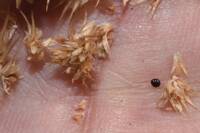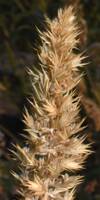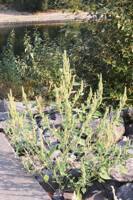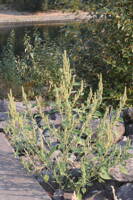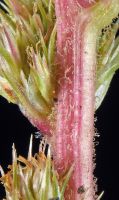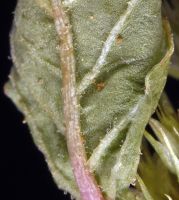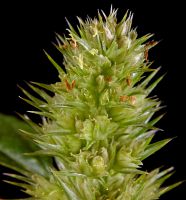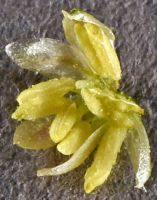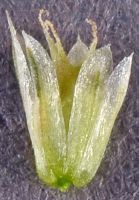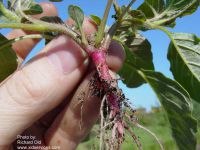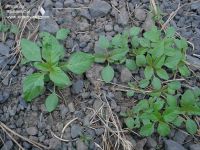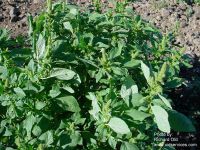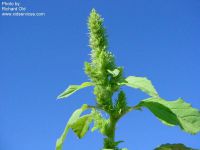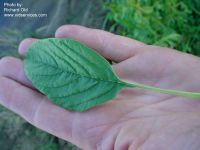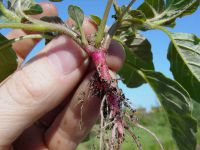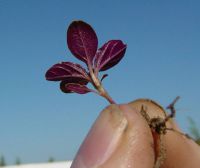Distribution: Occurring on both sides of the Cascades crest in Washington; Alaska to California, east across North America to the Atlantic Coast.
Habitat: Fields, roadsides, wastelots, and other disturbed areas.
Flowers: July-October
Origin: Introduced from eastern and central North America
Growth Duration: Annual
Conservation Status: Not of concern
Pollination: Wind
Dioecious, erect, simple to freely-branched annual 5-10 dm. tall, obviously pubescent.
Leaves alternate, numerous, the blade lanceolate to obovate-oblanceolate, 2.5-8 cm. long, hairy on the lower surface, narrowed abruptly to petioles about as long.
Flowers closely crowded in terminal and axillary, simple to compound spikes 2-10 cm. long, subtended by several lanceolate, spiny bracts 3.5-5 mm. long; sepals of the pistillate flowers spatulate to lanceolate, 2.5-4 mm. long, at lest twice as long as the ovary; petals none; stamens usually 5; styles 3.
1-seeded capsule.
Publication: Sp. Pl. 2: 991. 1753.
PNW Herbaria: Specimen records of Amaranthus retroflexus in the Consortium of Pacific Northwest Herbaria database
WA Flora Checklist: Amaranthus retroflexus checklist entry
OregonFlora: Amaranthus retroflexus information
E-Flora BC: Amaranthus retroflexus atlas page
CalPhotos: Amaranthus retroflexus photos

